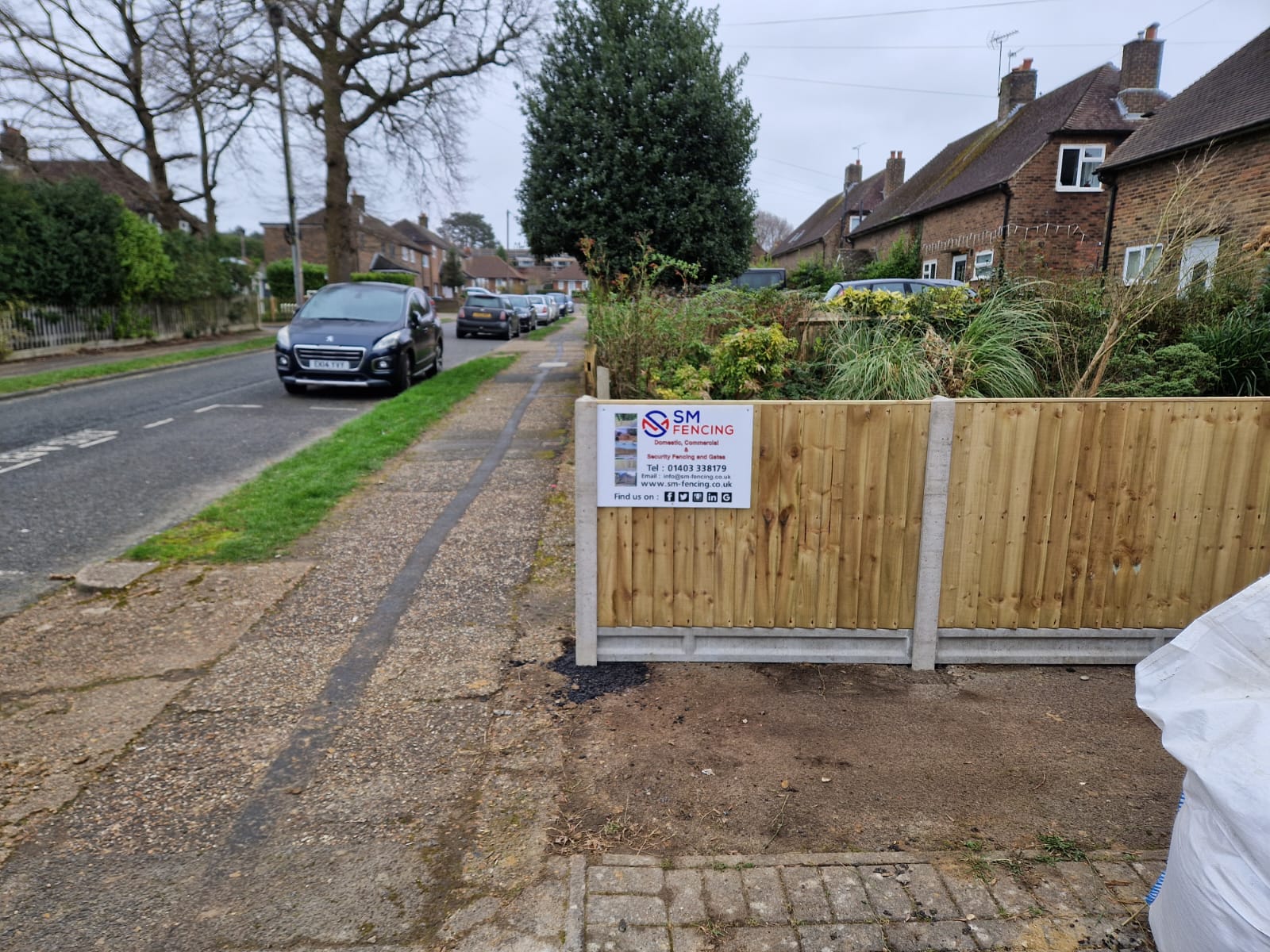

In an era where the integrity of our built environment is subject to the caprices of weather and time, the quest for durable and robust construction materials is incessant. For those with a stake in residential property, the choice of material for structural supports, such as fence posts, is not merely a matter of aesthetics, but one of longevity and resilience.
Enter the stalwart concrete post: an exemplar of enduring strength.
As of today’s architectural and construction standards, concrete posts are not just a preferred option but often the sine qua non for residential boundary demarcations and support frameworks. Their inherent ability to withstand the rigours of adverse weather and their imperviousness to rot and insect damage render them an indomitable contender in the realm of structural supports.
Concrete posts are quintessential in providing robust, enduring support for a variety of structures such as fencing, gates, and pergolas. Their superior strength, coupled with resilience against environmental wear and deterioration, places them at the forefront of long-term structural solutions.
Their inherent durability and steadfastness assure property owners of a sound investment that underpins the stability of the erected structure for many years to come.
Concrete posts embody resilience—a robust support invaluable for boundary and structural reinforcement.
Concrete posts set the benchmark for unparalleled durability and long-lasting stability in residential property use.
These monolithic supporters champion longevity, resisting natural elements with an unyielding fortitude unmatched by organic rivals, hence ensuring enduring boundaries and steadfast structures.
They epitomise an unassailable strength—anchoring a web of reliability and firmness into foundations—that transcends visual aesthetics to offer a pragmatic advantage for property robustness.
Concrete posts are principally composed of cement, aggregates such as gravel and sand, and water. The proportion and quality of these materials critically influence the durability and strength of the finished posts.
Quality control ensures consistency in mixing and curing stages. Pre-stressed reinforcement may be utilized to enhance robustness.
Each post undergoes meticulous manufacturing processes, including mixing, moulding, and curing, to ensure it meets the stringent standards required for structural integrity. The controlled environment within the manufacturing facility guarantees consistency and quality.
The production process culminates in a rigorous quality assessment, where each post is examined to ensure it meets the specifical structural requirements. The incorporation of admixtures, such as accelerators or retarders, can adjust setting times and workability. Through these meticulous steps, the concrete posts attain the crucial “set” – the irreversible hardening that equips them for their supportive role in various structures.
Concrete posts offer superior longevity and durability, often surpassing the performance of their timber counterparts. The inherently robust nature of concrete ensures resistance to rot, rust, and insect damage, categorically eliminating the need for regular maintenance or replacement. This innate resilience extends the service life of structures, which makes concrete a preferred choice for construction projects that demand enduring stability.
Additionally, concrete posts provide exceptional structural integrity due to their ability to withstand high loads and resist environmental stressors such as extreme weather conditions. Their mass contributes to stability, which is especially beneficial in windy areas or where ground movement is a concern. The formidable strength-to-weight ratio they possess also means they can support heavy structures without buckling or bending, ensuring a secure and stable edifice that can be relied upon to stand the test of time.
Concrete posts are inherently designed for long-term structural stability and resilience.
Their tenacity in resisting rot, decay, and corrosion solidifies their place as a staple in construction.
Their weight and density contribute significantly to the anchoring of structures, promoting peace of mind for property owners.
Concrete posts require minimal upkeep, freeing owners from frequent maintenance costs and labor.
Their durability translates directly into long-term savings for proprietors.
Resistant to the common maladies that afflict other materials, concrete posts stand as monuments to cost-efficiency and operational economy, demanding little by way of ongoing expenditure.
The initial investment in concrete posts may appear substantial; however, when amortised over a life span that often stretches across decades, the value becomes unequivocally clear. It is a matter of prudent economics—an upfront cost that obviates the need for continuous outlay, situating concrete posts as an investment in enduring quality and financial judiciousness. In many cases, this financial calculus positions concrete as the “material of choice” for fiscally responsible property development.
Concrete posts serve multifarious roles from foundational support to perimeter delineation in residential areas, often seen in garden fencing solutions.
They are favoured for their compressive strength in applications such as support for structural frames and reinforcement for retaining walls, providentially fortifying the built environment against the forces of nature.
Utility poles and street light supports exemplify “heavy-duty” and “light-duty” roles that concrete posts fulfil in urban infrastructure.
Concrete posts are integral to diverse structural applications due to their robustness and longevity.
Their widespread use is a testimonial to their unrivalled practicality and durability in construction.
Concrete posts exhibit a range of profiles, shapes, and dimensions to suit diverse applications and aesthetic preferences.
Customisation, a hallmark of modern manufacturing practices, allows for posts to be tailored with various finishes, colours, and textures that complement surrounding structures and landscapes. This versatility extends to the integration of functional elements such as grooves for fencing panels and predrilled holes for wiring or plumbing, facilitating ease of installation and utility maximisation.
Structurally, reinforced options with embedded steel offer heightened strength. These are particularly suited to heavy-duty applications such as supporting large gates or high-impact security barriers. Conversely, for lighter applications, unreinforced concrete posts may suffice, balancing cost-effectiveness with adequate performance.
For discerning property owners, options abound to ensure functional conformity as well as visual harmony. Advanced manufacturing techniques can impart sophisticated designs and decorative elements that elevate the utilitarian concrete post into a feature that offers both structural support and enhances the aesthetic appeal of the property. Embracing these customisations can significantly contribute to the overall value and appeal of a residential estate.
The installation of concrete posts is a procedure necessitating meticulous planning and execution. It is imperative that the posts are aligned accurately to ensure not only the visual alignment but also the structural integrity of the installed system. Anchoring the posts correctly in a prepared footing, typically consisting of concrete, is essential for long-term stability. The footing should be proportionate to the post’s load requirements and environmental conditions such as soil type and frost lines. It is advisable to utilise a spirit level during installation to verify vertical straightness, and string lines to ascertain alignment continuity along the fencing line. Furthermore, backfilling should be compacted methodically to prevent future subsidence. Adhering to these installation protocols will establish a durable and visually pleasing outcome.
Prior to commencing the installation of concrete posts, thorough site preparation is imperative.
A methodical approach to gathering tools and materials will streamline the installation process.
Dig the initial post hole.
The first action involves excavating a hole for the post. The recommended depth and diameter will vary depending on the height of the post and local ground conditions. Generally, a depth equivalent to one-third of the post’s above-ground height is advocated. Upon reaching the desired depth, a layer of gravel for drainage should be placed at the bottom of the hole.
Set the post in place.
Insert the concrete post into the excavated hole. It’s crucial to verify that the post is perfectly vertical using a spirit level. Additionally, temporary braces may be utilized to maintain the post in an upright position during the setting of the concrete.
Prepare and pour the concrete.
Once perfectly aligned, prepare the concrete mix according to manufacturer’s specifications. When the concrete is ready, pour it around the base of the post, being careful not to disturb its positioning. Ensure that enough concrete is used to fill the hole to ground level, creating a secure base.
Allow the concrete to cure.
After pouring the concrete, it’s imperative to allow sufficient curing time. Typically, a minimum of 24 to 48 hours is required, dependent on weather conditions and the concrete mix used. During this period, it’s crucial not to apply any force or weight that could shift the post’s alignment.